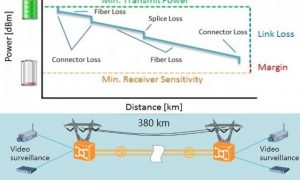SDH
It is a transmission method. This method is used in optical fibre transmission system called SDH system. We have already discussed the basic concepts of the transmission system. This video will give you the basic concept of SDH.
SDH = Synchronous Digital Hierarchy.
EU and Japan standard.
A standard for telecommunication transport defined by ITU-T.
Prerequisite.
Following concepts are required to get the concept.
- PCM Pulse code Modulation.
- Communication system Fundamentals.
- T1 and E1 lines.
- PDH Plesiochronous Digital Hierarchy.
System Clock synchronisation.
Synchronous.
All systems clocks are synchronised with a master clock. All clocks may be out of phase but run at the same frequency.
Plesiochronous.
All system clocks run at the same frequency with a defined precision.
Asynchronous.
System clocks are not synchronised. Tx and Rx have an independent clock.
SDH properties.
- Powerful Management (Overhead Structure to handle with multiple signal levels and performing management tasks.)
- Standard Optical Interfaces.
- Standard Digital Format.
- Vendor Independent.
- Synchronous Digital Structure.
- Easy Cross connection.
- Easy add and drop (SDH performs single stage multiplexing).
- Reliability (automatic repair mechanism).
- Direct access to low-order tributaries.
- Compatible with transport PDH signals.
- Supports various topologies ring, bus, star and etc.
- It provides both electrical and optical input interfaces.
- Switching protection is offered by rings.
- Provisioning of services to preferred routes.
- Interface existing PDH signals.
- NMS facility.
STM-1 synchronous transport module level 1.
- 270 column.
- 9 rows.
- Row by Row Transmission.
- Time period is 125us.
- Each byte represents 64Kbps.
- ITU-T recommendation G.707.
STM-1Frame Calculation.
Time period is 125us
Each byte represent 64Kbps
Total byte= 270*9=2430
Each byte=08 bits
Total bits = 2430*8=19440
Frame Frequency=8000
Time period=1/8000=125us
Data rate of one byte = 8*8000=64Kbps
Data rate of frame =19440*8000=155Mb
STM-N Levels.
The basic rate of transmission 155.54 Mbps. SDH hierarchy based on multiple of 155.54Mbps.
STM-1 155.54Mbps.
STM-4 622Mbps.
STM-16 2.5Gbps.
STM-64 10Gbps.
Higher order rate is the exact multiple of the lower order rate. It is known as a synchronous digital hierarchy.
POH Path Overhead.
Path overhead is a monitoring and alarm information field. Path overhead size varies with container size. PoH travel with the container over the path.
Virtual container = POH + Container.
VC 11, VC 12, VC 2, VC 3, VC 4.
SOH Section Overhead.
Overhead has basically the same job everywhere( Management, Control, Alarm and etc). In SDH network, Overheads are coupled with network architecture to simplify the task.
Regenerator Section Overhead (RSOH).
Pointer (AU-PTR).
It indicates the first byte of a virtual container. Its function becomes important in the case of asynchronous case.
Multiplex Section Overhead (MSOH).
SDH Signal Mapping.
Container C.
It accepts data from pdh level signals.It performs bit stuffing to adjust data rate.
Virtual Container VC.
It has container and POH. POH contains alarm information, Performance and Some management information.
Tributary Unit TU.
VC + Pointer.
Tributary unit Group TUG.
Administrative Unit AU.
Administrative Unit Group AUG.
SDH Network Element.
Regenerator.
It regenerates the attenuated signal.
Terminal Multiplexer or Path Terminal Element (PTE).
It is end point device.It combines the lower level of signals into a STM-N level.
ADD/DROP Multiplexer.
In-ring setup, it performs the add and drop of multiple levels Of signals.
Digital Cross Connect (DXX).
It performs the switching function for various sizes of containers.





thank you so much sir ,you helped alot sir, can you share these slides ? it would be really helpfull .
Sir u have explained in an easy manner about PCM, E1&T1, PDH, SDH,SONET.
Are these topics written in simple language in some books also so tht we can make notes.please suggest the book for the same video’s.
Still awaiting for SDH Protection video …….plz post earlier.
Plz post SDH Protection video asap………….Sir
Sir g this is not 1st video (https://academy-khi.com/sdh/) in this video you are saying this is second part so where is first part ? I really appreciate if you double check and share the correct link of 1st part as it is not there with name of SHD.
Hi there,
I’m unable to find your first video about SDH SONET 1? Can you please share the direct link here.
Thanks
AbdulAleem
https://academy-khi.com/sdh/
Sir ! i am Naeem from lahore .Your videos about SDH is very appreciable .
Hi Sir,
Thank you for your knowledge sharing videos. Easy to understand with examples.
Request you to make & share video on SDH overhead byte functions.
Again thanks for all videos.
Thanks Dear. visit http://www.academy-khi.com for more videos.
Plz sir ek video otn par be daale..
Sir i really thank you.. Your videos are doubt destroyer, complex topics are explained in too much simpler way. Please make videos how to apply this knowledge on practical systems like MADM, DWDM,DXC etc. What is loop testing. How channels are divided in DWDM systems, How to make cross connections for practical circuits, How leased lines functions??
Fiber optic
please sir ye WDM k bare me b ik video lecture upload kare thanks sir for your best videos lectures
please sir ye DWDM k bare me b ik lecture de sir
I will discuss in coming video
thanks sir